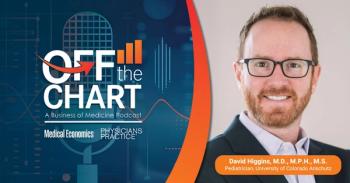
Medical malpractice: Rate of paid claims has fallen since 2002
Authors in JAMA analysis argue that emerging models of medical liability should help fix a "stable but still dysfunctional" malpractice environment for physicians and patients
The rate of paid
The rate of paid claims for physicians decreased from 18.9 paid claims per 1,000 doctors in 2002 to 9.9 paid claims per 1,000 doctors in 2013, for an annual average decrease of 6.3%, according to the study’s authors, Michelle M. Mello, JD, PhD, MPhil, David M. Studdert, LLB, SCD, MPH, both of Stanford University, and Allen Kachalia, MD, JD, of Harvard University.
READ MORE:
Meanwhile, none of the geographic locations the authors examined showed large increases in malpractice premiums. Instead, “most showed flat or declining premiums,” the authors wrote.
They describe today’s liability environment for physicians as “stable but still dysfunctional” and say that the malpractice system is “mediocre at best” in addressing its two main responsibilities: Compensating patients who have received negligent care and deterring substandard care by healthcare providers.
What impact have traditional liability reforms-tort reforms through the introduction of damage caps-had on this positive liability environment for physicians? Very little, the authors contend.
“Despite the intuitive appeal of conventional tort reforms and advocates’ strong claims regarding their efficacy, the best available empirical evidence does not provide a strong basis for crediting these reforms with the relatively stable environment that has occurred over the past decade,” they write.
READ MORE:
Instead, the authors argue that emerging “non-traditional approaches” to liability reform show the most promise in alleviating the malpractice challenges facing physicians, patients and the healthcare system in general. These approaches include:
- communication and resolution programs, in which healthcare providers openly discuss adverse outcomes with patients to seek resolution to the situation, and in many cases offer an apology,
- Safe harbors, or laws that give physicians a defense if they can prove that they followed guidelines and protocols during patient care, and
- administrative compensation systems that direct malpractice claims into an alternative judicial process that taps “specialized adjudicators, evidence-based guidelines for liability determinations and damages, neutral experts, and a compensation standard that is broader than the negligence standard.”
“Further testing of nontraditional reforms, followed by wider implementation of those that work, holds the most promise. Prospects for permanent improvement in the medical liability climate depend on it,” the authors conclude.
Newsletter
Stay informed and empowered with Medical Economics enewsletter, delivering expert insights, financial strategies, practice management tips and technology trends — tailored for today’s physicians.








